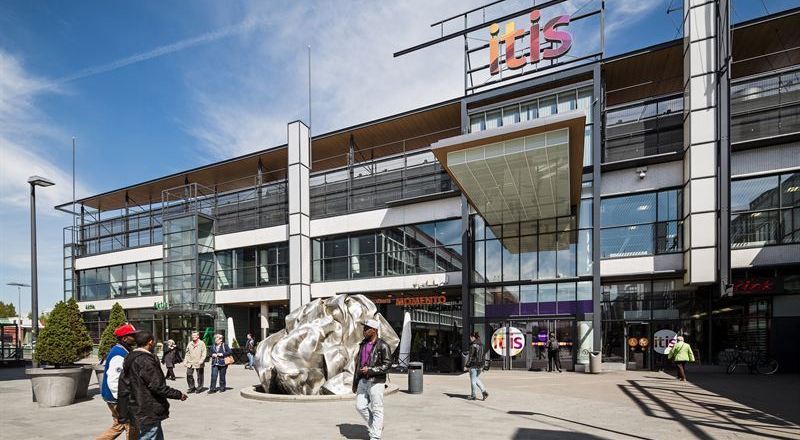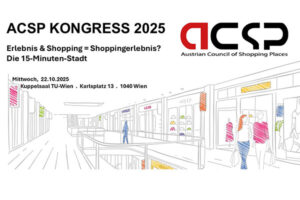
ACROSS: Why and how has the significance of security in European shopping centers changed?
ERIK ENGSTRAND: We see changes in several ways: We have to recognize the changes in the ways shopping centers are being used. There’s a move away from traditional shopping centers to more destination-centric venues. This presents new challenges which we need to address. These range from how we prevent unwanted visitors colonizing shopping centers to how we accommodate new types of tenants. More restaurant and more leisure offerings present increased risk and safety issues. These start with the need for adequate provisions in lease contracts and the requirement to mitigate risks.
We observe changes in tenants’ behavior. They pay increasing attention to safety and security concerns when selecting a location. Previously tenants relied on the assumption that landlords were taking responsibility. Now we see tenants carrying out due diligence before they sign a lease where they ask for proof of the measures center management undertake to safeguard their staff, visitors, brand, and investment.
Another big change is the impact of social media when unforeseen events occur. The importance of a well-integrated communication capability as part of your crisis management cannot be stressed enough.
The overall risk level of terror threats across Europe remains high. Given that shopping centers are an integrated part of any community which attract large numbers of visitors they are seen as a soft target. This means that the threat of terror action is something center managers need to keep at the forefront of their minds.
ACROSS: What are the risks that European shopping centers are confronted with today?
ENGSTRAND: We say challenges differ depending on where you are located. For instance, dense city center environments present different challenges to suburban locations. However, some universal risks apply. Center operations are increasingly outsourcing more of their services leading to a lack of control over safety and security matters. But you cannot outsource your responsibility for security management. Center management always remains responsible for your visitors, assets, and your tenants.
Our list of five topical safety/security issues we see in Europe today:
1 – Criminal elements establishing businesses in shopping centers by taking over lease contracts: Not only are there the risks associated with their criminal activities such as racketeering, money laundering, drugs or illegal workers within the shopping center. Additionally, they tend to disregard local and legal requirements compounding the risk to shopping centers. To avoid this, it is imperative to have rigid lease agreements and to know your customer by conducting a proper due diligence prior to signing and lease agreements.
2 – Youths and gangs in shopping centers are increasing dramatically: This not only affects the overall safety and security of a shopping center, but also the profile of the center in the eyes of tenants and consumers. Additionally, piranha-attacks where gangs run into selected stores and raid valuable goods overwhelming retail staff who cannot act due to the sheer number of perpetrators. These flash raids are extremely fast presenting difficulties for security unless in the immediate vicinity.
3 – Organized theft: Increasingly shopping centers and retailers are targets for organized theft, especially in Scandinavia. Gangs from eastern Europe have shopping lists of what to steal and are travelling between different stores to fulfil their quota before they return home. With open borders, relatively small risk of getting caught, in combination with short sentences, it is a highly lucrative business causing a major headache for retailers. A functional cooperation between tenants, coordinated by the owner has proven an effective preventive measure.

4 – Accidental fires: Negligence relating to fire safety remains a pressing issue in many shopping centers. Since the biggest risk of accidental fire is always tenants’ works, especially F&B tenants, landlords need to be more involved in controlling, and helping tenants to reduce the risks. Again, this starts with the lease agreements where responsibilities need to be clearly assigned between the parties. We always recommend landlords to take responsibility for overseeing high risk systems such as kitchen exhausts to ensure proper maintenance is performed and adequately documented.
5 – Accidents involving leisure tenants: more leisure offerings aimed at
minors present increased responsibilities for both operators and landlords. Not
only are the activities themselves often prone to injuries, also minors need to
be managed in case of an emergency. Last year 41 children died in Kemorovo,
Russia, and this year a fatal incident in Poland resulted in five teenagers
losing their lives. Both cases stress the importance of checking premises and
installations before a tenant starts to operate and to verify that all such
tenants have adequate emergency response and evacuation plans, together with
suitable staff training. If we invite children to play or encourage visitors to
entrust their children to an operator center management has an obligation to
step up and take responsibility to provide a safe environment and ensure
similar tragedies never happen again.
ACROSS: Which measures must be taken to minimize these risks?
ENGSTRAND: Perform a security risk assessment: The key method of determining the level of safety and security risk management measures needed for any specific shopping center. This must be performed by someone independent who understands the business rather than the incumbent security company. It should reflect the types of tenants, footfall, activities, surrounding neighborhood, and the overall threat picture. A good shopping center needs a good security risk management plan to mitigate the prevailing risks.
Adopt a standard: Compliance with an industry standard for shopping centers in risk and security outlining criteria needed to minimize operational risk.
Have clear requirements: To be communicated to tenants from the leasing phase onwards, and enforced through regular compliance checks.
Effective risk management: Is not something to be applied as a superficial afterthought. Modern risk management in a shopping center environment must be holistic, cross-functional, and applied throughout the life cycle to encompass all disciplines to attain operational excellence.
ACROSS: Which roles do the people, tenants, and customers play in security management?
ENGSTRAND: I believe it’s hard to put any specific requirements on our visitors. They are guests at our shopping centers and, rightfully, expect us to provide a safe and secure shopping environment for them to visit. It is for center management to pre-empt or handle any incidents.
However, the tenants’ involvement is crucial: Retailers play a very important part in everything from risk mitigation in their operations to emergency response. It starts with retailers operating their stores in a safe and secure way to reduce incidents and knowing what to do in response to incidents and emergencies. It is important that the shopping center communicates what is required and expected from retailers, provides information, gets them involved and encouraging them to provide adequate training. Engaged tenants are a great asset conveying vital information and guidance to visitors during an emergency. We sometimes hear complaints about non-engaged tenants, which is invariably traced back to some lack of clarity in communication between tenants and center management. In our experience the vast majority of tenants are very positive and prepared to take a bigger role. And why shouldn’t they? After all they have made a substantial investment in the shopping center in fit-out, goods, personnel, and branding.
ACROSS: And how about the investors? Are they willing to invest enough money into this issue?
ENGSTRAND: In short–yes, through the optimal application of resources. I see some advisers recommending extra capex on technical systems, or greater service charge expenditure on additional guards. In my experience, these measures can only support, not substitute, best-practice management, thus optimizing already committed expenditure.
For operational centers we often see a lot of improvement potential just by working in a more structured way by adopting a standard, and revising existing processes. Not merely those activities owned by the security function, but across all the different operational disciplines. Hence, provided you have the basic installations and systems in place the cost of making dramatic improvements is often very small. We refer to this as risk mitigation through operational excellence.
For development projects we can do a lot at zero cost, or even achieving a cost saving by reducing future operational costs. If someone with knowledge is in involved early-on in the project, one can value-engineer cost effective solutions. For example, by applying crime prevention through environmental design in the early phases of a project, or giving inputs on the lease plan, we can avoid having to make costly alterations or compensatory measures at a later date.

ACROSS: Please give us one or two examples of safe shopping centers.
ENGSTRAND: As a visitor you quickly get a feeling whether a shopping center feels safe. This may be accurate, but without in-depth knowledge of shopping center operation, risk management and standards to measure against, it is just that, a feeling. With the SAFE RetailDestination©certification we are moving from abstract feelings to tangible facts. We know most shopping centers are doing a great job and we are often impressed by the quality of operations. However, when you are visiting a certified center you can rest assured it is optimally managed and has a culture and staff dedicated to providing a great retail experience and a safe customer journey.
Two examples of SAFE RetailDestination© we’ve assessed recently are: ITIS in Helsinki, Finland–a Morgan Stanley asset. After verifying their internal processes and procedures and making further improvements to the safety and security the shopping center demonstrates that it offers a safe and secure shopping experience for all. Safe for tenants, visitors to the shopping center, and for the team members working at the asset. ITIS have invested a great deal on life safety and wanted an independent safety and security assessment that goes further than local requirements. They wanted an industry benchmark, and that’s what they’ve achieved. The second example is Kista Galleria in Stockholm, Sweden–a Citycon asset. We examined Citycon’s processes and procedures and helped them develop their own standard based on best practice in the industry. Their reward for first mover advantage and being an early adopter was for Kista Galleria to be the first Nordic SAFE RetailDestination©, Citycon is at the forefront of risk management having developed their own standard.






